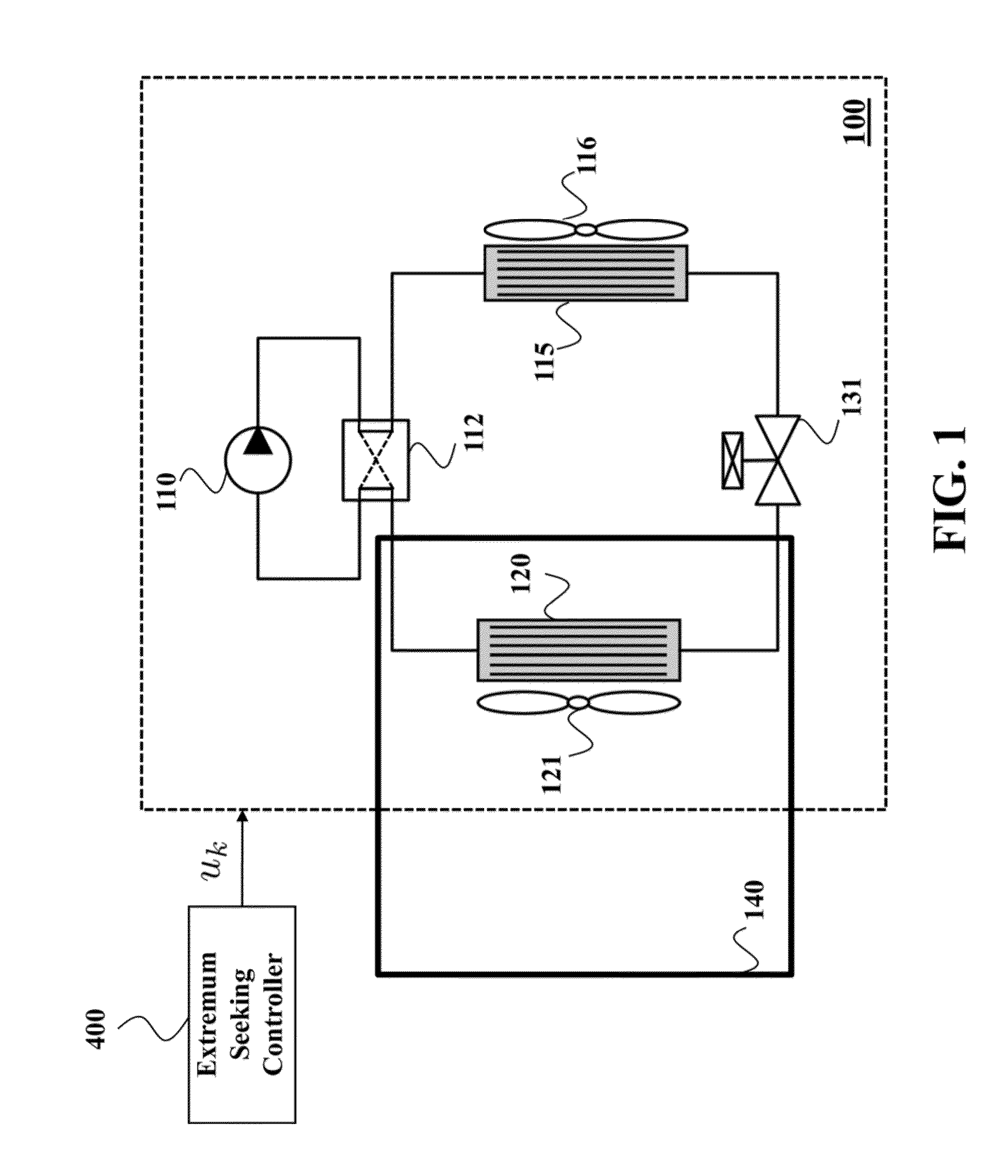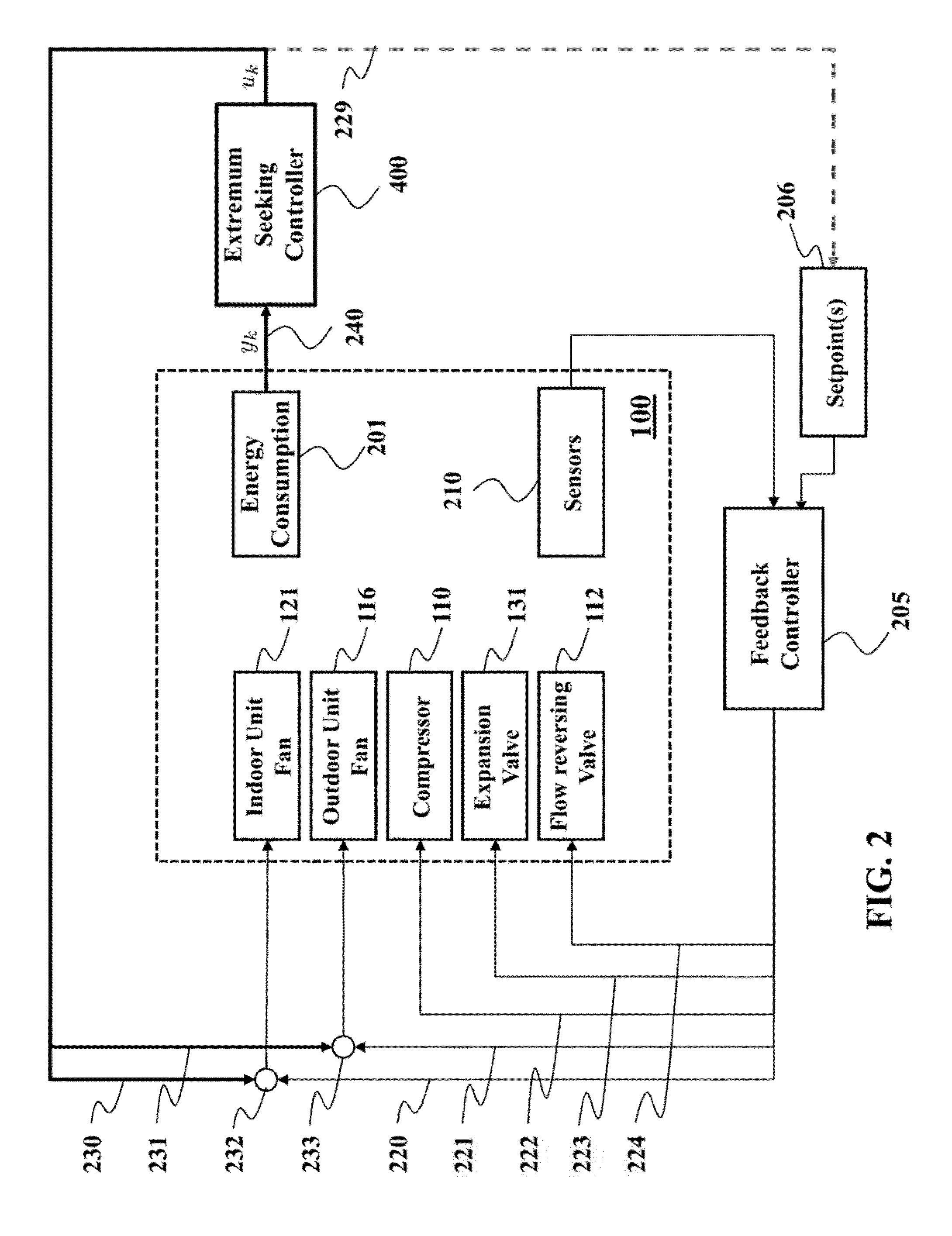Time-Varying Extremum Seeking for Controlling Vapor Compression Systems
a technology of vapor compression system and extremum, which is applied in the direction of lighting and heating apparatus, heating types, instruments, etc., can solve the problems of single model not being able to accurately describe the variations among copies produced as the result of a manufacturing process, the model of the system deviating from the actual behavior of the system, and the different amounts of energy consumed. achieve the effect of optimizing or minimizing the signal, improving the convergence rate of extremum-seeking control methods
- Summary
- Abstract
- Description
- Claims
- Application Information
AI Technical Summary
Benefits of technology
Problems solved by technology
Method used
Image
Examples
example
[0094]FIG. 7A shows a schematic of usage of an extremum seeking method for the problem of minimizing the performance metric of a simple Hammerstein system 730 including a first-order linear difference equation 720 and a static output nonlinearity 725. The controller 710 generates control signal 701 provided to the optimization target 730 and receives measurements of the performance metric 703. The controller has no model of the Hammerstein system or any explicit knowledge about the nature of its optimal value, other than the assumption that the relationship between the input and output is convex, and that the optimal value of the performance metric, y 703 is a minimum.
[0095]The equations for this system 730 are given by
xk+1=0.8xk+uk
yk=(xk−3)2+1
which has a single optimum point at
u*=0.6
y*=1.
[0096]FIGS. 7B and 7C show graphs representing a comparison of the performance of the controller 710 starting from an initial input value of u=2 and turned ON after 100 steps. The conventional con...
PUM
 Login to View More
Login to View More Abstract
Description
Claims
Application Information
 Login to View More
Login to View More - R&D
- Intellectual Property
- Life Sciences
- Materials
- Tech Scout
- Unparalleled Data Quality
- Higher Quality Content
- 60% Fewer Hallucinations
Browse by: Latest US Patents, China's latest patents, Technical Efficacy Thesaurus, Application Domain, Technology Topic, Popular Technical Reports.
© 2025 PatSnap. All rights reserved.Legal|Privacy policy|Modern Slavery Act Transparency Statement|Sitemap|About US| Contact US: help@patsnap.com



